Sushi rice is an absolute must for anyone who enjoys noshing on nigiri or sushi rolls. You want to be sure you choose the best sushi rice brand so that your favorite dishes come out tasting just the way you want them to. However, understanding what makes sushi rice unique can be challenging if you don’t know a lot about the different varieties of rice on the market.
This kind of rice is short-grained and becomes dense and sticky after it is cooked but also takes on a tender texture. The firmness is needed to shape the rice into blocks for sushi, which can make it easier to eat if you like to use chopsticks. Today, we’ll be sharing the best 10 brands for making sweet and sticky sushi rice for various recipes.Quick Comparison: Top 10 Brands of Sushi Rice
1. Lundberg Family Farms Organic Sushi Rice
Lundberg Family Farms offers this organic California rice in six-packs, each containing 16 ounces of rice for sushi and other dishes. It is a reasonably low-calorie option that contains dietary fiber for that added nutritional value. While it is grown in the United States, it offers an authentic Japanese short-grain rice type that can take your sushi or other Asian-style dishes to the next level.
One of the features that makes this sushi rice stand out is that it’s certified USDA organic and is non-GMO project verified. In addition to that, this is kosher and vegan, meaning that most of us can enjoy it regardless of our dietary needs. This sushi rice can be prepared in several ways and is gluten-free for those who prefer to avoid the substance or cannot eat it for health reasons.Pros
Cons
2. Nishiki Medium Grain Rice
Have you been looking for medium-grain rice that is produced in the United States? If so, Nishiki Medium-Grain Rice might be the right fit for you. This Nishiki rice is produced in the USA and comes in a convenient five-pound bag. Despite its less traditional origins, it has an authentic taste and texture that you would expect from any sushi rice from Japan or other Asian countries.
This is a sushi rice that contains no salt, no cholesterol, and no fat, making it a healthy addition to your diet. It has 33 grams of carbohydrates but also offers plenty of dietary fiber. If you decide to go for this rice, make sure you store it in an airtight container to ensure that bugs and other pests can’t find their way into it.Pros
Cons
3. Kokuho Rice Sushi
This sushi rice from Kokuho is available in two types: a single five-pound bag or a package that contains five packs of five-pounds. It is 100% California grown, medium-grain, and milled for the best results for your sushi needs. When you purchase this rice, you’re guaranteed to get the highest grade product from the newest crop available.
Another perk of this sushi rice is that it’s simple to prepare and quick to make into a meal. It takes less than 15 minutes to get everything done and move on to the fun part: the eating. This isn’t a small-grain rice, but it does plump up well and offers a stickiness that is ideal for sushi and other dishes like it.
Pros
Cons
4. PowerMedley Nishiki Premium Medium Grain Rice
Whether you only need a fresh new supply of sushi rice, or you want a huge supply of rice plus free chopsticks, PowerMedley has just what you need. The gift set has two five-pound bags and two sets of chopsticks, while the traditional version is just a single bag of the authentic rice. For those who prefer rice from the U.S., you’ll be happy to know that this variety is made in California.
While most sushi rice is small-grain, this is a medium-grain version that still offers plenty of stickiness to hold together your sushi or other Asian dishes. The packaging it comes in is not, however, appropriate for long-term storage. You’ll want to transfer it into a container that is airtight to prevent bugs from getting into your rice.Pros
Cons
5. Sekka Extra Fancy Premium Grain Rice
When you order this Sekka Extra Fancy Premium Grain Rice, you’ll receive a huge package with 15 pounds of sushi rice. However, unlike some of the top sushi rice available, it comes in a medium-grain size rather than a small grain size. Despite that, this sushi rice offers plenty of stickiness to hold together the rice and other ingredients we typically enjoy in sushi and other recipes.
The bag containing this rice is durable and has handles but should be swapped out for an airtight container as soon as possible. This is a United States brand of sushi rice that is ideal for incorporating into many dishes, from sushi to side dishes and even desserts. It can be cooked and ready to go for dinner in as little as 20 minutes.Pros
Cons
6. Tamanishiki Super Premium Short Grain Rice
When you choose Tamanishiki Super Premium Short Grain Rice, you get the same kind of rice that has been famous for its use in sushi for countless years. Its short-grain form makes it very sticky so it can hold pieces of meat, fish, or vegetables together with ease. It’s also very versatile, as you can buy it in a single package, package of two, or package of four.
One of the things that sets this sushi rice apart from the rest is how well-known it is, leading to a high level of popularity. Tamanishiki is a sushi rice that is often used in some of the best Japanese restaurants and has the potential to take your sushi to a whole new level. It’s also an all-natural rice that comes from California, which those who like to shop in the United States may appreciate.Pros
Cons
7. RiceSelect Sushi Rice
This RiceSelect Sushi Rice is made to offer a sweet flavor, which means it can be used in things like sushi as well as desserts like rice pudding. It also has a sticky and soft texture meant to latch on to and hold ingredients like meat, fish, and vegetables inside the sushi. The sushi rice comes in a durable container that is BPA-free and recyclable, which is a great bonus for the eco-friendly among us.
As a non-GMO product, this sushi rice is ideal for those who are watching what they eat. It also meets various dietary needs, as it is certified kosher and contains no gluten. In addition, this rice has low to no levels of fat, sodium, and cholesterol.Pros
Cons
8. Annie Chun’s Cooked White Sticky Sushi Rice
The top feature that sets this rice from Annie Chun’s apart is the fact that it’s made to be convenient for eating in a hurry. Instead of having to cook it on a stovetop, you can pop an individual container in the microwave, and it will be ready in under two minutes. It can be consumed as it is, added to recipes like rice and beans, or used to make sushi.
Families may find this product doesn’t work as well for them as individuals looking for a fast meal, since preparing it in bulk involves a lot of moving and removing containers from the microwave. However, the package does come with six bowl servings, each of which is free from preservatives, additives, and artificial flavors.Pros
Cons
9. McCabe Organic White Short Grain Sushi Rice
McCabe offers a variety of rice, but this organic short-grain white rice is the best option for making sushi, rice pudding, and other Asian dishes that rely on stickiness. The package holds three pounds of rice and is made to be durable so that it won’t break down in transport. However, it’s best to move it into an airtight container once you receive it so you aren’t surprised by the unwanted appearance of moisture or insects.
This rice is made in California and makes use of sun-drying to give it its additional vitamin D and minerals compared to rice that has been dried in a typical dehydration machine. It is also organic and certified by both OCIA and CCOF every year.Pros
Cons
10. Koda Farms Sho-Chiku-Bai Sweet Rice
This sweet rice from Koda Farms is designed for mochi and other dishes of that kind, but it can also be used for sushi in some cases. It has the classic small-grain form you expect and is milled to offer the best whole kernel percentage for quality dishes. In addition, the farm it comes from has been providing rice since 1948 and is a family-owned establishment.
For those with special diets, this is a certified kosher form of rice that is also non-GMO. It’s low fat, low cholesterol, and low sodium, but does contain fiber, protein, and a variety of vitamins and minerals like niacin, iron, folic acid, and thiamin.Pros
Cons
Things to Consider Before Buying the Best Sushi Rice
Many recipes call for long-grain rice, which is excellent in salads, side dishes, pilafs, and more. However, when you are in the mood for some authentic sushi, this type of rice simply will not cut it. Sushi rice is short and wide with a high level of stickiness when you cook it on the stove or in a rice cooker.
The reason sushi rice gets so sticky is because of a starch known as amylopectin. It turns into a gelatin-like substance when it is cooked, which is what makes sushi rice so much creamier and more tender than other types of rice. It is also slightly starchier than other types of rice, which comes through in the dishes it is commonly used in.
While sushi rice originates from Japan and other parts of northeast Asian, it is also now grown in some regions of the United States. The largest area that farms rice in the U.S.A. is California, but it can also be grown in Arkansas, although this is typically where you will find the long-grain variety.
Even if you’ve never had experience cooking sushi rice, most people have tried it out at some point. While you may not be a sushi connoisseur, this type of rice is also used in various other dishes. If you’ve eaten meals like gimbap, bibimbap, or onigiri, you’ve probably had a little taste of sushi rice at least once or twice.
What Makes Sushi Rice Unique to Other Rice Types
Understanding what makes sushi rice unique requires an understanding of rice in general. For instance, rice can come in long-grain, short-grain, or medium-grain forms, and each has a different texture to give to a dish. When it comes to rice used for sushi and similar dishes, the best option is going to be a short-grain rice, as it is starchier and leads to a stickier end result.
In addition, as sushi is an Asian dish, being aware of the types of Japanese rice can also help you find the best sushi rice brand for your needs. There are two types that are most prevalent in Japan (both of which are short-grain rice options):
- Mochigome – A glutinous Japanese sweet rice that is most often used to create traditional wagashi sweets and mochi rice cakes.
- Uruchimai – Also known as Japanese rice or Japanese short-grain rice. It’s the type of rice that is best for rice balls, sushi, and other savory Japanese dishes. This kind of rice also has other uses, such as being used to make rice vinegar and sake.
While both of these rice types are short-grain and have a sticky texture that seems ideal for sushi, they are very different and should not be substituted for one another. Mochigome is going to be chewier, more glutinous, and stickier than typical Japanese rice.
In Western countries such as the United States, Japanese rice is often called sticky rice due to its texture compared to traditional white rice. However, sticky rice doesn’t have a solid definition and is more of a casual way to describe rice that is stickier than average.
When someone refers to sticky rice in an Asian country, it usually refers to sweet rice. So remember that while Japanese rice does offer stickiness just as basmati and jasmine rice do, it isn’t the same kind of sticky rice.
Sushi rice, on the other hand, is a Japanese rice that has been flavored using vinegar-based seasonings and is only used for making sushi. This can be confusing, many types of short-grain rice can be labelled as sushi rice. However, short-grain rice isn’t technically sushi rice until the appropriate seasonings are added.
Health and Nutrition Facts About Jasmine Rice
Sushi is a food that has been enjoyed for over 2,000 years. This elegant food presentation that originated in Japan takes advantage of sushi rice to bind together small pieces of vegetables or fish. The rice is essential, but so are the raw or cooked fish and vegetables that are melded with it in this unique way.
As we’ve mentioned, sushi rice is most often short-grain and contains two different types of starches: amylose and amylopectin. Sushi rice usually has a higher amount of the latter starch, which makes it stickier and provides a way for the sushi to more easily form together. Brown sushi rice is a light brown color and retains bran, while white sushi rice has had the bran removed.
A look at the USDA nutrient database shows that a short-grain white rice, when cooked, is more than 68% water. In a sample of 100 grams of this sushi rice, there are about 130 calories, less than a gram of fat, over two grams of protein, and just under 29 grams of carbohydrates. When using cooked brown rice, there are 72 grams of water, under a gram of fat, 112 calories, under three grams of protein, and about 24 grams of carbohydrates.
There are both positives and negatives to sushi rice when it comes to your health. Sushi rice is mostly fat-free, and a meal made up of sushi typically has little fat and a low number of calories. If you use sushi rice without adding mayonnaise or frying it up, it’s going to have even fewer calories.
If you choose brown rice, it also has a bit of dietary fiber, which can help with your digestive health and wellbeing. Most sushi rice is served wrapped around pieces of sushi, which also makes it easy to watch your portion sizes and avoid overeating if that is something you are concerned about.
On the negative side, sushi rice is rather high in carbs and usually doesn’t offer much in the way of protein. This means that if you eat a lot of sushi rice, you might meet your carb and calorie limits before you are able to meet your daily protein intake needs.
When choosing white sushi rice, this problem is exacerbated, as it is refined and contains a high amount of starch. A carbohydrate of this type is going to be less healthy than choosing a whole grain that has not been refined.
Preparation Methods for Sushi Rice
After you have your sushi rice ready to go, there are a few additional ingredients you need to make it authentic. For this sushi rice preparation method, you should have the following items at hand:
- 2 2/3 cups of short-grain sushi rice
- 2 ½ cups of water
- 3 tablespoons of rice vinegar
- 2 tablespoons of sugar
- 1 ½ teaspoons of salt
- The first step to creating sushi rice is making sure you have the right type of rice. In most cases, this will be a white hulled sushi rice made of short-grain rice that is slightly sweet and sticky. Make sure that the rice you choose is not medium or long-grain, as it will not stick together and bind, which is a requirement for sushi.
- Next, you want to measure out the rice depending on how many you are feeding and what recipe you are following. In this case, we’ll use about three cups of rice to create a large portion of sushi rice. You should also think about whether you will be cooking the rice on the stovetop or in a rice cooker.
- You will want to rinse off the rice before going any further. This is done by pouring massive amounts of cold water onto it and then using your fingers to move the rice around the water to remove dirt and starch particles. This doesn’t have to be done for a long time – just swish it around thoroughly and then pour out as much of the water as possible.
- Now we can move onto cooking the rice, which is done by adding about 100 milliliters of water for every 100 grams of rice. Use the same container that you used to measure the rice to measure the water for best results. Next, you can put the water and rice into a pot, put on the lid, and turn the heat to high.
- At this point, you should watch the pot until it comes to the boil. After it begins to boil, you should set a timer for seven minutes. While some rice may stick to the bottom, this is nothing to worry about. The rice stuck on the bottom won’t be used when making the actual sushi.
- After your rice and water mixture has boiled for seven minutes, turn down the heat. You want to take it down to the lowest setting and then let it simmer for another 15 minutes. Throughout this process, remember not to remove the lid for best results.
- This step is optional and consists of allowing the rice to cool if you want it to be less sticky when you season it. However, cooling it down too much can make it dry out, so you need to be cautious with this step.
- Now you are going to put together the seasoning for the rice, which includes rice vinegar, sugar, and coarse salt. Different vinegar brands can have different tastes, so you may want to do some tasting as you go along. On average, you’ll want to use 100 milliliters of vinegar with one and a half teaspoons of salt and three tablespoons of sugar. Place all the ingredients in a pot and heat, stirring until all the ingredients are dissolved. Then you can taste it and change up the amounts as needed.
- This is the point where you mix the seasoning with the rice, typically in a flat-bottomed, round barrel or tub with a wooden paddle. However, you can also use a cookie sheet or a baking pan to toss the rice with the liquid in a flipping and tossing motion. Use gentle movements to avoid cooking the rice further.
- At this point, the rice is ready to use, or you can put it in the fridge and reheat it later in the microwave or through gentle steaming.
Conclusion
Sushi rice is more than meets the eye and can be used for far more than just sushi, although it’s clearly great for that, too. It is unique to your typical white or brown rice and isn’t exactly the same as jasmine or basmati rice either.
With the help of this article, you should now be able to pick out the best brand of sushi rice for you. You should also have a better idea of some of the recipes that use sushi rice so you can get inventive in your kitchen. All that’s left is going ahead and buying the perfect rice for your needs and getting cooking.
Sources:
https://www.livestrong.com/article/357645-sushi-rice-nutrition-information/
https://delishably.com/meat-dishes/The-Different-Kinds-of-Sushi
https://www.wikihow.com/Make-Sushi-Rice
https://www.cooksillustrated.com/articles/1791-finding-the-best-sushi-rice

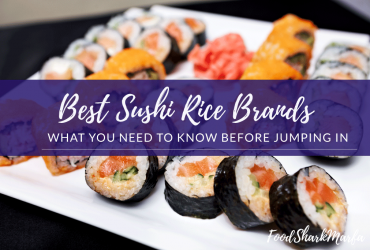
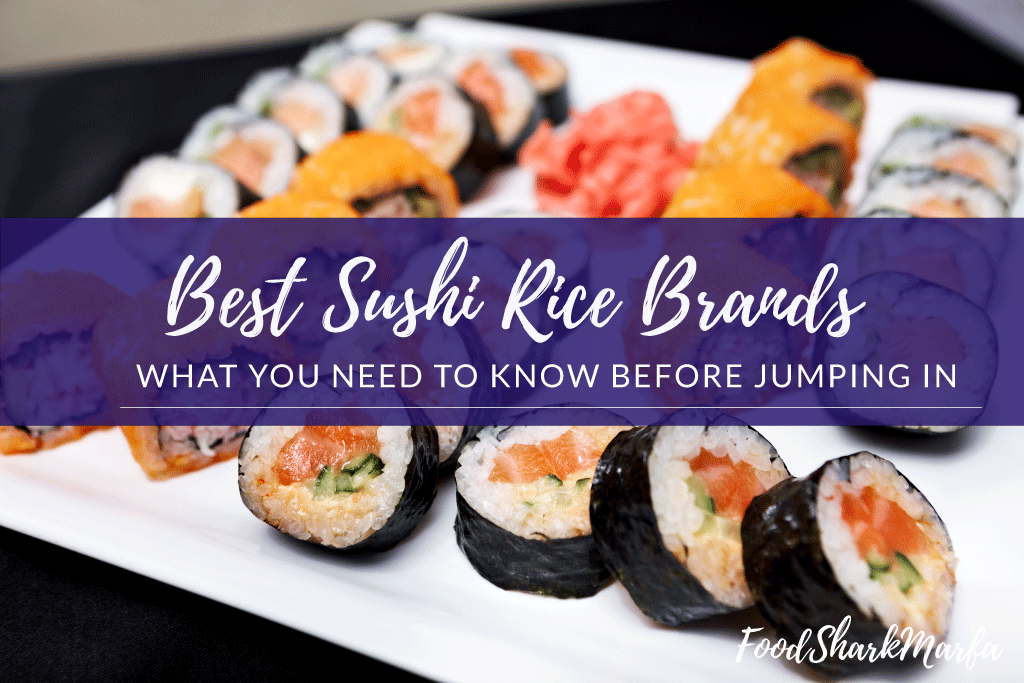

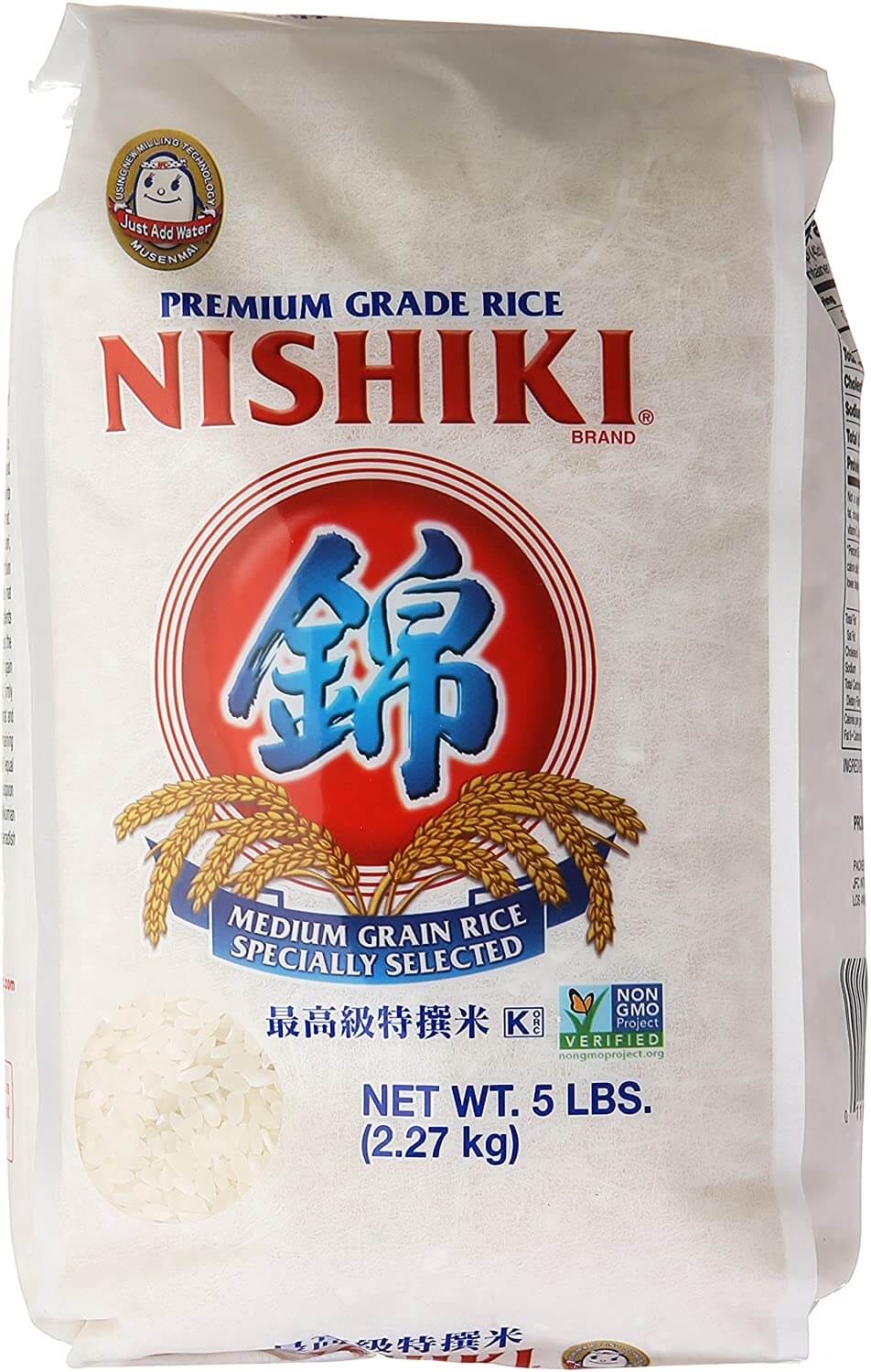
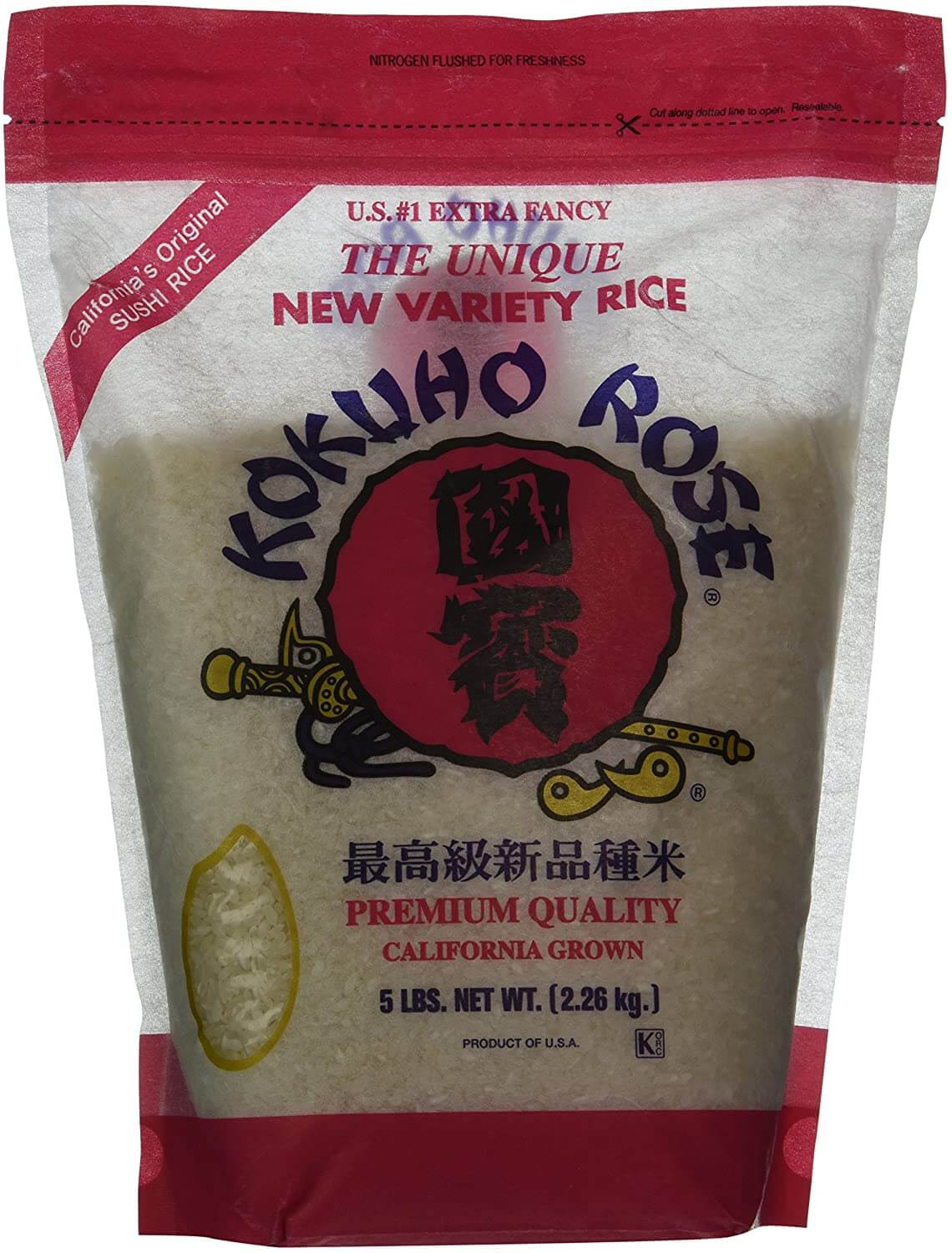



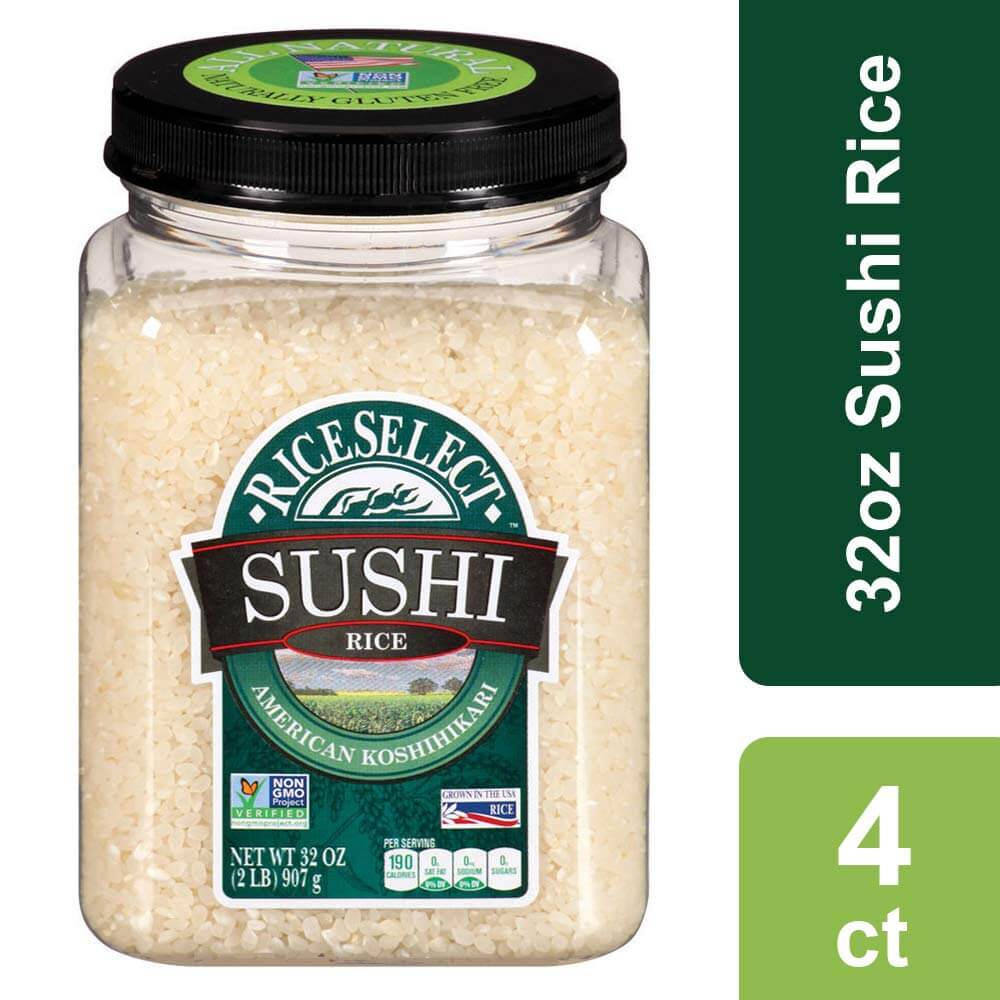




Related Posts
The 9 Best Tofu Presses in 2023
The 12 Best Sushi Making Kits For Making Sushi Like A Professional Sushi Chef
The 10 Best Bamboo Steamers for Bao, Broccoli and More